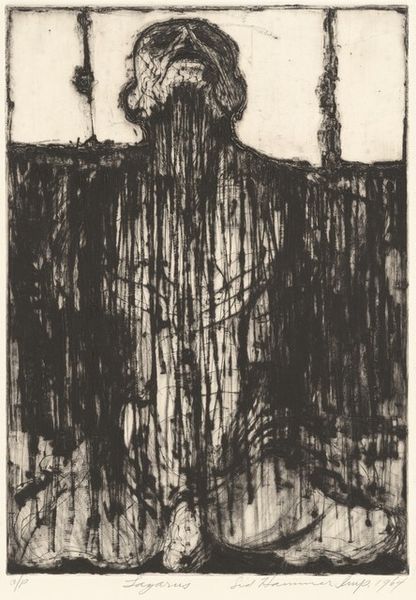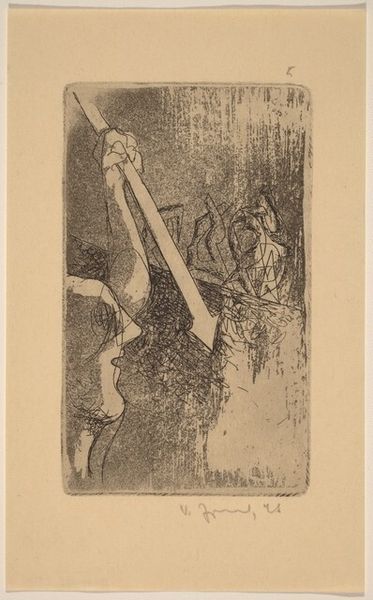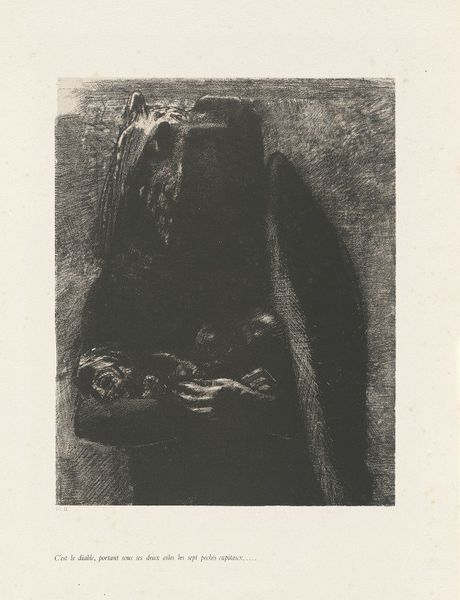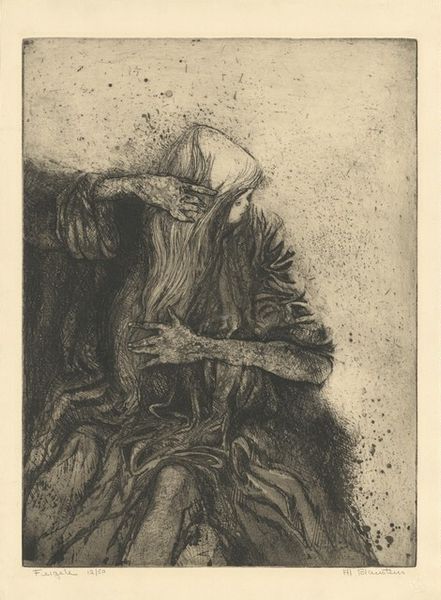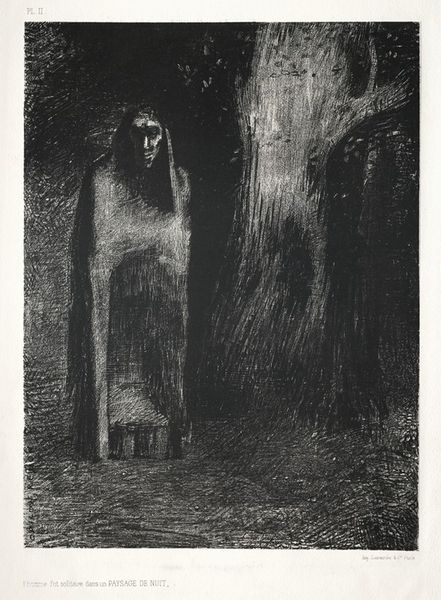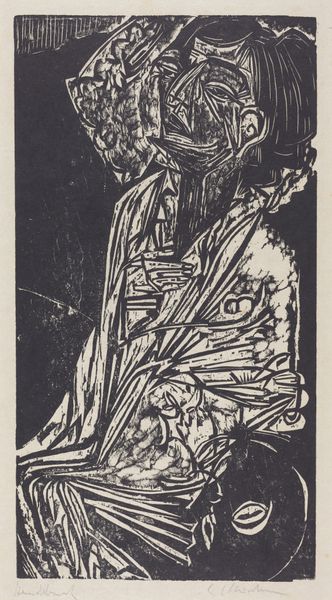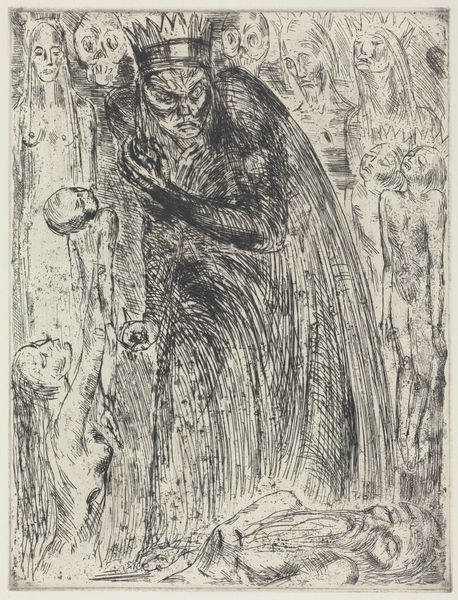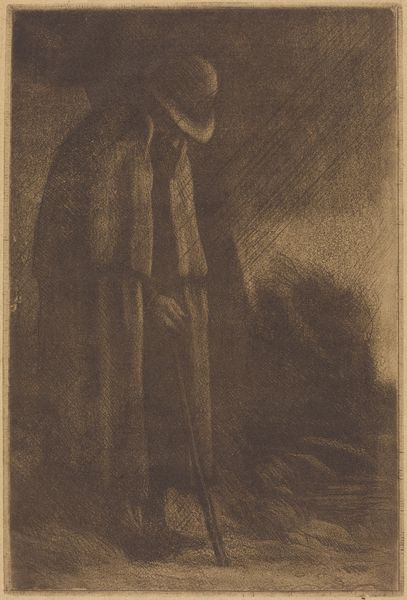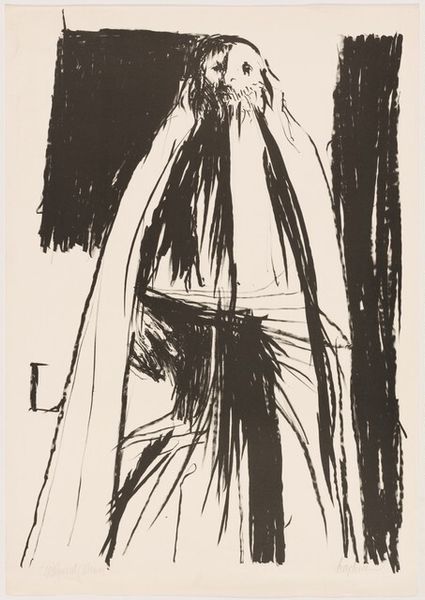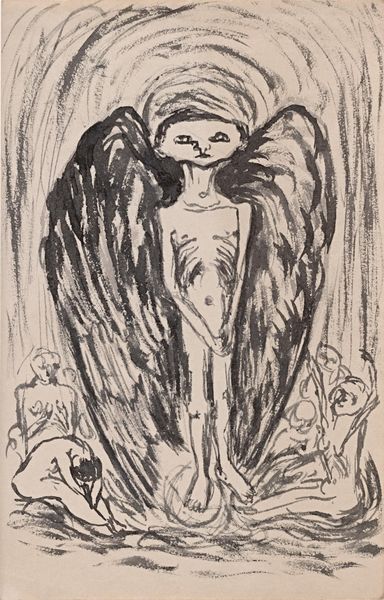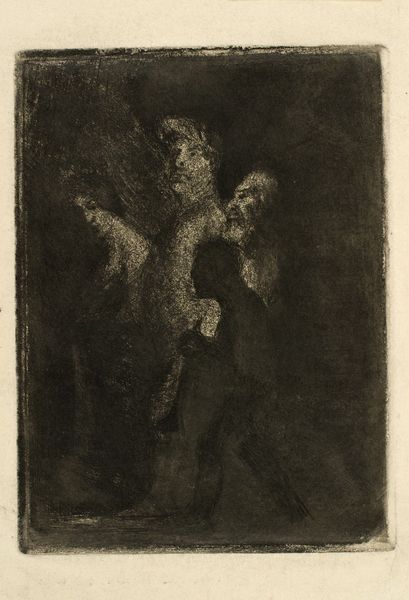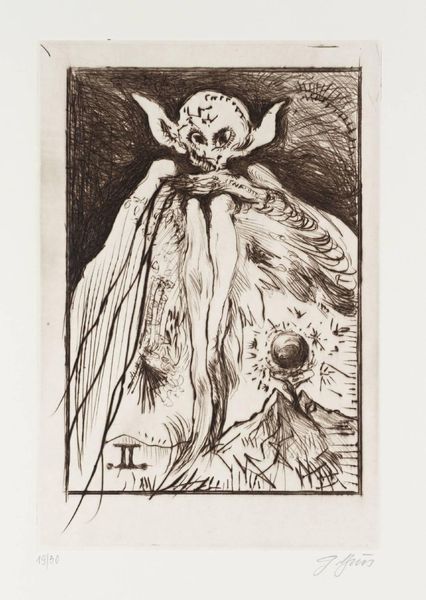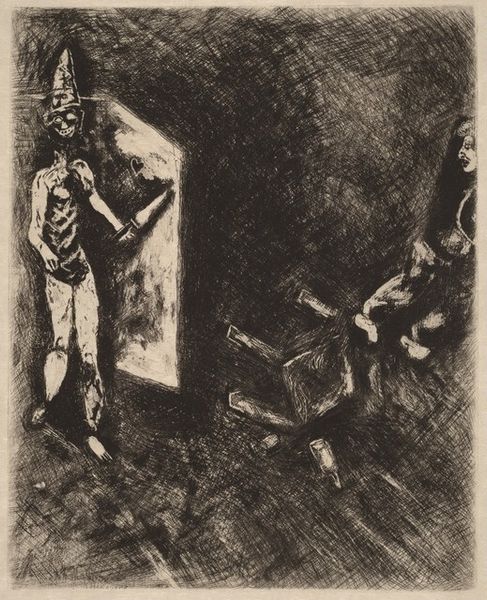
drawing, pencil, graphite
#
pencil drawn
#
drawing
#
pencil sketch
#
landscape
#
vanitas
#
pencil
#
symbolism
#
graphite
#
pencil work
Dimensions: height 325 mm, width 180 mm
Copyright: Rijks Museum: Open Domain
Curator: It strikes me as an unexpectedly delicate image, considering the subject matter. Editor: Indeed. This is "Death Appearing in the Sky above a Castle," a graphite and pencil drawing by Jean Danguy, created sometime between 1885 and 1895. The rendering of death feels more spectral than grotesque. Curator: Exactly. The skeletal figure seems to be emerging, not menacing. The presence of the hourglass is of course, symbolic, referencing time's passage, but it feels less about an ending and more about transformation. Death as a ferryman perhaps? A figure ushering in the inevitable? Editor: I am immediately drawn to the dramatic contrast in value. Look how Danguy uses the dark pencil strokes to render depth around the spectral figure, emphasizing the radiant skeleton and creating a stark dichotomy between dark and light. Notice, too, the way the looming castle is almost swallowed up by this pervasive darkness. The effect makes you almost feel the air thickening around it. Curator: I see the castle as a clear reference to societal structure and the temporal world—that which we believe is permanent. Then death arrives and we perceive how fragile our temporal world truly is. Danguy taps into the longstanding symbolic tradition of memento mori, prompting reflection on life's ephemerality. Editor: Do you see the texture, the clear markings of the pencil? There's no hiding of the artistic process; Danguy doesn't try to create an illusion of reality, he presents death through raw expression and unfiltered materiality. Curator: And I think that rawness heightens its symbolic power. We confront death not as an abstract concept, but as an inherent aspect of human experience. A culture's visual language allows it to confront fear. Editor: Yes, there's an emotional resonance that moves beyond the intellectual recognition of symbols. The composition, for instance, seems less like a literal depiction and more like an emotional manifestation, a projection of internal states into an external form. I find this interplay between internal sensation and visual expression particularly fascinating. Curator: I appreciate that Danguy has left us something so ambiguous, where a chilling image can lead to a contemplation of mortality, without falling into pure darkness. Editor: And perhaps that’s where art reveals its unique capacity to hold complexities—an unsettling scene crafted by the stark contrasts of pencil strokes can give us pause.
Comments
No comments
Be the first to comment and join the conversation on the ultimate creative platform.
